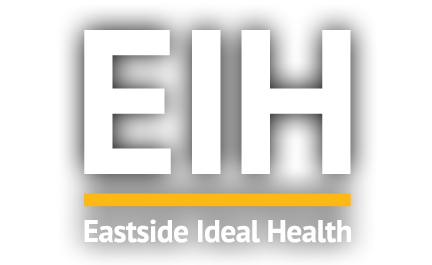Are you experiencing persistent arm and elbow pain? This discomfort can greatly impact your daily activities and overall quality of life. However, there is an effective solution that you may not have considered – chiropractic care.
What is Chiropractic Care?
Chiropractic care is a holistic approach to healthcare that focuses on the alignment of the musculoskeletal system, particularly the spine. Chiropractors use hands-on techniques to adjust the body’s structure, primarily the spine, to alleviate pain and improve overall function.
While chiropractic care is often associated with treating back and neck pain, it can also provide significant benefits for arm and elbow pain. Let’s explore some of the key reasons why chiropractic care is a valuable option for addressing these issues.
1. Identifying the Root Cause of Pain
When you visit a chiropractor for arm and elbow pain, they will conduct a comprehensive examination to determine the underlying cause of your discomfort. This assessment may include a detailed medical history, physical examination, and possibly imaging tests.
Chiropractors take a holistic approach to healthcare, meaning they consider the entire body and its systems. They understand that arm and elbow pain may not always originate from the affected area but could be linked to issues in other parts of the body, such as the spine or shoulders.
By identifying the root cause of the pain, chiropractors can develop a personalized treatment plan to address the specific issues contributing to your arm and elbow discomfort.
2. Spinal Adjustments for Nerve Relief
One of the primary techniques chiropractors use to treat arm and elbow pain is spinal adjustments. Many nerves in the body, including those that run through your arms and hands, originate from the spinal cord. When the spine is misaligned, it can put pressure on these nerves, causing pain and discomfort.
Through targeted spinal adjustments, chiropractors can realign the vertebrae and alleviate the compression of nerves. This can lead to significant relief from arm and elbow pain, allowing you to resume your daily activities without limitations.
3. Soft Tissue Techniques
In addition to spinal adjustments, chiropractors may also use soft tissue techniques to address arm and elbow pain. These techniques involve applying manual pressure to the affected muscles, tendons, and ligaments to relieve tension and improve flexibility.
Soft tissue techniques, such as massage therapy and active release techniques, can help reduce inflammation, promote healing, and increase blood flow to the affected area. This can expedite the recovery process and alleviate arm and elbow pain more effectively.
4. Rehabilitation and Strengthening
Chiropractors not only focus on pain relief but also on long-term recovery and prevention of future injuries. They may incorporate rehabilitation exercises and strengthening techniques into your treatment plan to promote healing and improve the overall function of your arms and elbows.
These exercises are designed to target specific muscles and joints, helping to restore mobility, flexibility, and strength. By actively participating in rehabilitation and strengthening activities prescribed by your chiropractor, you can support the healing process and reduce the likelihood of future arm and elbow issues.
5. A Holistic Approach to Health and Wellness
Chiropractic care goes beyond pain relief and focuses on overall health and wellness. Chiropractors believe in treating the body as a whole rather than just addressing symptoms. They will work with you to develop a comprehensive plan that considers your lifestyle, nutrition, and other factors that may be contributing to your arm and elbow pain.
This holistic approach can result in long-lasting benefits, as it addresses the underlying causes of the pain and promotes overall well-being.
If you’re experiencing arm and elbow pain, it’s essential to consider chiropractic care as a viable treatment option. A chiropractor can help identify the root cause of your discomfort, provide targeted adjustments and soft tissue techniques, and support your long-term recovery.
To learn more about how chiropractic care can help with arm and elbow pain, or to schedule a consultation, please visit Eastside Ideal Health.
What is chiropractic care?
Chiropractic care is a healthcare profession that focuses on diagnosing and treating musculoskeletal disorders, particularly those affecting the spine, through manual adjustment and manipulation.
Can chiropractic care help with arm and elbow pain?
Yes, chiropractic care can be beneficial in treating arm and elbow pain. Misalignments in the spine can cause nerve compression, leading to pain in other parts of the body, including the arms and elbows. Chiropractic adjustments can help realign the spine, relieving pressure on nerves and reducing pain.
What causes arm and elbow pain?
Arm and elbow pain can have various causes, including repetitive strain injuries, sports injuries, arthritis, nerve impingement, and muscle imbalances. It is important to seek professional medical advice to determine the specific cause of your pain.
Are there any risks or side effects of chiropractic care for arm and elbow pain?
Overall, chiropractic care is considered safe. However, as with any medical treatment, there are some risks and side effects to be aware of. These may include soreness or stiffness after the adjustment, temporary exacerbation of symptoms, or very rare instances of nerve or spinal cord injury. It is important to discuss any concerns with your chiropractor before treatment.
How many chiropractic sessions are typically needed to alleviate arm and elbow pain?
The number of chiropractic sessions needed to alleviate arm and elbow pain can vary depending on the severity and underlying cause of the pain. Some individuals may experience relief after just a few sessions, while others may require ongoing treatment for longer-term relief. Your chiropractor will develop a personalized treatment plan based on your specific needs.
Can chiropractic care be used as a sole treatment for arm and elbow pain?
Chiropractic care can be effective as a standalone treatment for some cases of arm and elbow pain. However, it is often recommended to combine chiropractic care with other treatment modalities such as physical therapy, exercise, and lifestyle modifications for optimal results. Your chiropractor will assess your condition and provide appropriate recommendations.
Is chiropractic care suitable for all individuals experiencing arm and elbow pain?
Chiropractic care is generally safe for most individuals experiencing arm and elbow pain. However, certain medical conditions, such as severe osteoporosis or spinal cord compression, may require alternative treatments. It is essential to discuss your medical history and any underlying conditions with a chiropractor before starting treatment.
How can I find a qualified chiropractor specializing in arm and elbow pain?
To find a qualified chiropractor specializing in arm and elbow pain, you can start by asking for recommendations from your primary healthcare provider, friends, or family members. You can also conduct online research and check for reviews and credentials of chiropractors in your area. It's important to choose a licensed professional who has experience in treating arm and elbow pain specifically.
Does insurance cover chiropractic care for arm and elbow pain?
Many health insurance plans provide coverage for chiropractic care, including treatments for arm and elbow pain. However, the extent of coverage can vary depending on your specific insurance plan. It is advisable to review your insurance policy or contact your insurance provider to understand the details of your coverage.
How to Prevent Arm and Elbow Injuries in the Workplace
In today's fast-paced work environment, it's common for employees to experience various injuries and conditions. One area of the body that is particularly prone to injuries in the workplace is the arm and elbow. Whether you work in an office, a construction site, or another occupation that requires repetitive arm movements, it's essential to take preventive measures to avoid arm and elbow injuries. In this article, we will discuss some effective strategies to help you prevent these injuries and maintain optimal arm and elbow health.
Ergonomics and Proper Posture
One of the key factors in preventing arm and elbow injuries is maintaining proper ergonomics and posture while at work. A good ergonomic setup includes having an adjustable chair and desk, positioning your keyboard and mouse at the correct height, and ensuring that your computer monitor is at eye level. This setup helps promote a neutral position for your arms and elbows, reducing the strain on these areas.
In addition to a suitable ergonomic setup, it's crucial to maintain proper posture throughout the day. Sit up straight, with your shoulders relaxed and your back supported by the chair. Avoid slouching or hunching forward, as this can put unnecessary stress on your arms and elbows. Taking regular breaks and stretching can also help alleviate tension in these areas.
Proper Lifting Techniques
Another common cause of arm and elbow injuries in the workplace is improper lifting techniques. Whether you need to lift heavy objects or simply perform repetitive lifting tasks, it's essential to use proper lifting techniques to avoid strain. Here are some tips to keep in mind:
- Always assess the weight of the object before lifting and determine if you need assistance.
- Bend at your knees, not your waist, and keep your back straight.
- Hold the object close to your body to minimize the strain on your arms and elbows.
- Avoid twisting or turning while lifting; instead, use your feet to rotate your body.
- If the object is too heavy to lift on your own, ask for help or use lifting equipment.
By following these proper lifting techniques, you can significantly reduce the risk of arm and elbow injuries in the workplace.
Regular Stretching and Strengthening Exercises
Engaging in regular stretching and strengthening exercises can help improve the flexibility and strength of your arms and elbows, reducing the likelihood of injuries. Some beneficial exercises to include in your routine are:
- Wrist and forearm stretches
- Elbow curls and extensions
- Shoulder rolls and stretches
- Resistance band exercises for the arms and wrists
- Grip and hand strengthening exercises
It's essential to perform these exercises under the guidance of a healthcare professional or a qualified exercise specialist to ensure proper form and technique.
Regular Breaks and Micro-Movements
In jobs that require repetitive arm movements, taking regular breaks and incorporating micro-movements throughout the day can help prevent overuse injuries. Every hour, take a short break to stretch your arms, rotate your wrists, and shake out any tension. Additionally, try incorporating micro-movements into your tasks, such as switching up your grip or alternating hands. These small changes can help distribute the workload and minimize strain on specific areas.
Proper Equipment and Tools
Having the right equipment and tools can make a significant difference in preventing arm and elbow injuries in the workplace. If you work with computers or other devices, make sure you have ergonomic keyboards and mice that support a natural arm and wrist position. Use hand trucks or carts when moving heavy objects to minimize the strain on your arms. If necessary, consult with your employer or a health and safety representative to ensure that you have the appropriate equipment for your specific job.
Seek Professional Help
If you experience any persistent pain, discomfort, or loss of function in your arms or elbows, it's important to seek professional help. The experts at Eastside Ideal Health specialize in the treatment and rehabilitation of various arm and elbow injuries. They provide chiropractic care, physical therapy, and sports medicine expertise to help you recover and regain optimal arm and elbow health. Visit Eastside Ideal Health to learn more about their services and how they can assist you in preventing and managing arm and elbow injuries in the workplace.
By implementing these preventive strategies and taking care of your arms and elbows, you can reduce the risk of workplace injuries and maintain optimal health and functionality. Remember, prevention is always better than cure, so prioritize your arm and elbow health in your everyday work routine.

